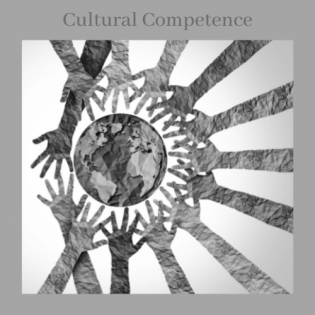Gender Identity and LGBTQ+
One of the ways we identify ourselves is through the culture of our gender identity. This may include our gender and how we express ourselves through our clothing, hair, and what we like to do and who we like to spend time with. This lesson raises awareness of the variety of ways people express who they feel they are.
Define what gender identity means
Genderbread person poster or handouts, available online (see bibliography, below)
Assess your group for their readiness for this lesson. Adjust the language to fit the age and maturity of the youth.
Modifications:
- For younger learners, you may describe attraction as simply “who you love.”
- If you would rather not use the word sex, you may refer to it as biology or anatomy
- You may choose to draw your own copy of the Genderbread person diagram if you wish to avoid the term “sexually attracted to” when working with lower elementary youth.
- With older kids, it can be helpful to explicitly give them a chance to get their giggles out before the lesson. Prepare them that they will hear the word “sex” in reference to anatomy.
- Gender identity: who you feel you are (ex: I am a girl, I am a boy)
- Gender expression: how you outwardly express who you are (clothing, hair styles, etc)
- Sex: your body’s characteristics (chromosomes, genitalia, hormones, etc)
- Attraction: feelings of love and desire
- LGBT+: a broad term for many of the ways that people experience love and gender identity
Have you ever been told that something you liked was “too girly” or “for boys”? How did that make you feel?
- Genderbread Person poster or handout, from https://www.genderbread.org/
- read aloud copy of Julian Is a Mermaid by Jessica Love
- Learning to Give literature guide to accompany the reading of Julian Is a Mermaid
- Learning to Give literature guide for When Aidan Became a Brother
Instructions
Anticipatory Set:
Ask 2-3 volunteers to describe who they are. Notice if any of the youth mention their gender as a part of their identity (also notice if none of them do). Explain to the group that for a lot of people, gender identity is a major piece of who they are and how they experience the world. Share the definition of gender identity (who you feel you are).
Explain to the group that along with cultures based on race or disability, the LGBT+ community is a cultural group as well. One way to build understanding of the LGBT+ community is to understand the Genderbread person.
Either with a large poster or on individual handouts showing the Genderbread person, explain the different components of the Genderbread person, starting from the brain.
It can be helpful to provide examples for the youth. For example, “my gender identity is that I am a woman. Sometimes a woman might wear dresses and have long hair, but sometimes a woman might wear baggy shorts and have short hair. Both are still a woman, even if the expression changes.”
Read the book, Julian is a Mermaid. Discuss with the group some of the following questions:
- Do we know what Julian’s gender identity is? We may not always know just by looking how someone identifies. How should we treat them in that situation?
- How did Julian feel when he first saw the mermaids?
- How do we think Julian’s abuela felt after seeing Julian dressed as a mermaid?
- How did Julian feel after his abuela saw him dressed as a mermaid?
- What did the abuela do that made Julian feel happy again?
Brainstorm with the group ways to make all people feel loved and welcomed regardless of their gender identity, expression, or who they love.
Giving back to the community: Research The Safe Zone Project [https://thesafezoneproject.com/] and work together toward making your group’s space, organization, or community a safe zone.
Philanthropy Framework
-
Strand PHIL.II Philanthropy and Civil Society
-
Standard PCS 02. Diverse Cultures
-
Benchmark MS.2 Describe the importance of hearing all voices in a community and respecting their right to be heard.
-
Benchmark E.2 Discuss the importance of respect for others.
-
Benchmark E.4 Demonstrate listening skills.
-
Benchmark MS.5 Discuss examples of groups denied their rights in history.
-
-
Standard PCS 07. Skills of Civic Engagement
-
Benchmark E.2 Discuss an issue affecting the common good in the classroom or school and demonstrate respect and courtesy for differing opinions.
-
-
